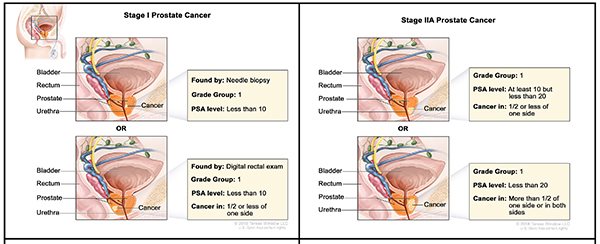Most prostate cancer begins in the gland cells in the prostate. Known as a "silent killer" because men often do not have symptoms in early stages, prostate cancer is the most common form of cancer other than skin cancer among men in the United States and is the second leading cause of cancer deaths among men. If prostate cancer is detected early and before the cancer spreads, patients have a nearly 100% chance of survival after five years. Survival rates for all stages of prostate cancer have increased since the 1990s but stabilized in recent years
Statistics
- One in eight men will be diagnosed with prostate cancer in his lifetime.
- One in 41 men will die from the disease, making it the second most common cause of cancer death in men.
- In 2023, 288,300 new cases of prostate cancer will be diagnosed in the United States, with 34,700 deaths.
- In Texas, an estimated 17,230 new cases of prostate cancer will be diagnosed in 2023, and 2,290 men will die from the disease.
Risk Factors
- Age: Men aged 65 and older account for about 60% of all prostate cancer cases diagnosed. The likelihood of developing prostate cancer increases after age 50.
- Family History: Men with close relatives (father, brother or son) who have had prostate cancer are more than twice as likely to develop the disease.
- Race: U.S. and Caribbean Black men have the highest prostate cancer incidence rate worldwide. The rate of prostate cancer is more than 70% higher in Black men than Caucasians, for reasons that are unclear.
- Genetic Factors: A BRCA-1 or BRCA-2 gene mutation or having Lynch syndrome may increase risk.
- Diet:Men who consume high amounts of red meat or dairy products and few fruits and vegetables have a higher risk of prostate cancer.
Prostate Cancer Stages
Click the graphic to see a larger version
Click the graphic to see a larger version
Symptoms
The following may be symptoms of prostate cancer but could be linked to other health conditions. If these symptoms are present, men are encouraged to consult their physician for proper testing:- Weak or interrupted urine flow
- Sudden urge to urinate
- Difficulty controlling urination
- Painful or burning urination
- Blood in urine or semen
- Pain or pressure in rectum
- Frequent pain or stiffness in spine, pelvis, hips, ribs, thighs, or other bones
- Difficulty having an erection
- Painful ejaculation
- Decrease in amount of fluid ejaculated
- Frequent urination, especially at night
- Difficulty fully emptying bladder
- Weakness or numbness in legs or feet
- Pain or discomfort when sitting
- Anemia
Prevention
- Eat a variety of fruits and vegetables. Soy, pomegranate, green tea, flaxseed, turmeric, and broccoli are rich in substances that may help prevent prostate cancer.
- Reduce consumption of foods high in fat or dairy.
- Regular exercise may decrease the risk of prostate cancer.
- Maintain a healthy body weight, as obesity can further complicate prostate cancer.

